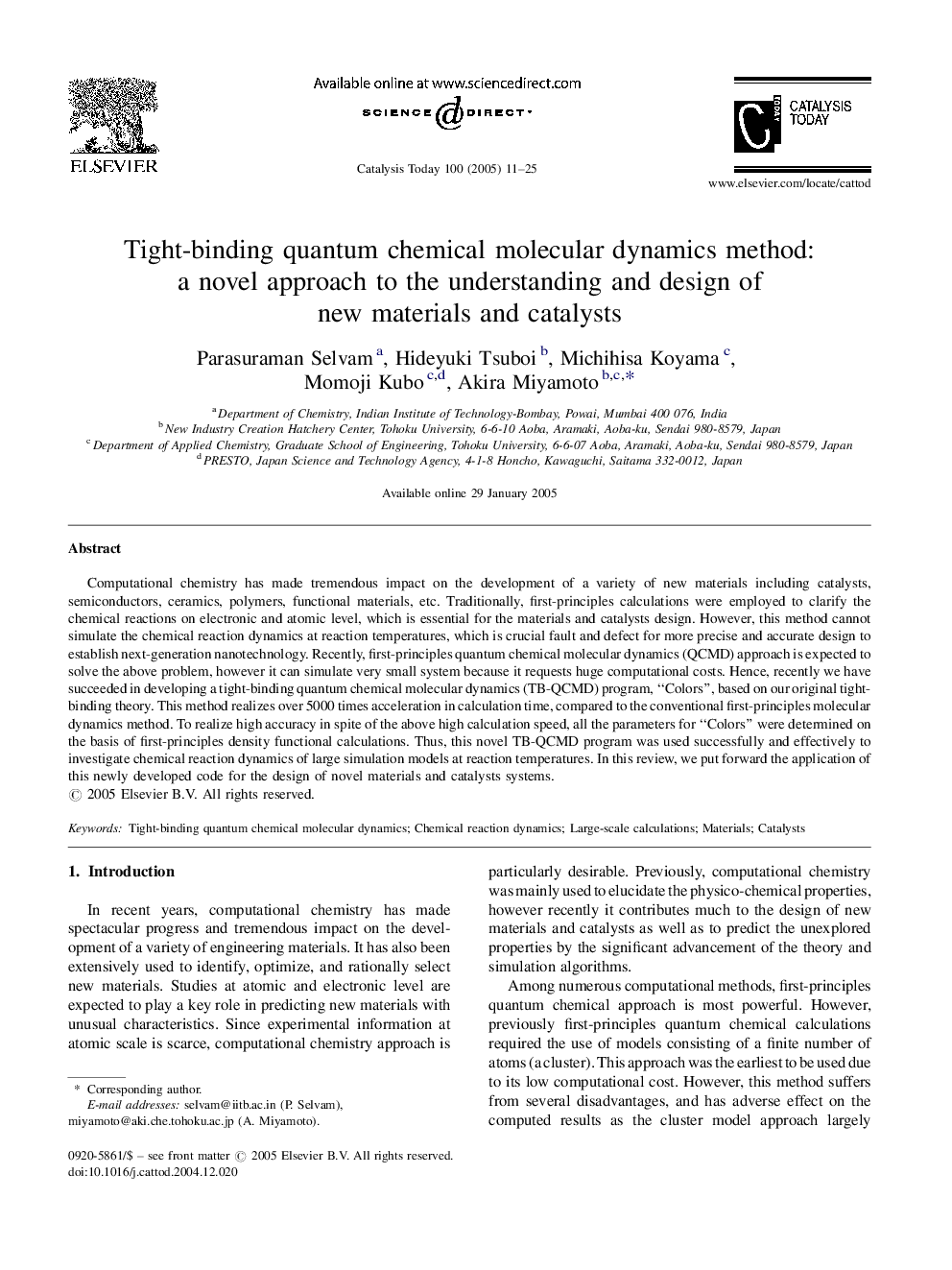| Article ID | Journal | Published Year | Pages | File Type |
|---|---|---|---|---|
| 9610535 | Catalysis Today | 2005 | 15 Pages |
Abstract
Computational chemistry has made tremendous impact on the development of a variety of new materials including catalysts, semiconductors, ceramics, polymers, functional materials, etc. Traditionally, first-principles calculations were employed to clarify the chemical reactions on electronic and atomic level, which is essential for the materials and catalysts design. However, this method cannot simulate the chemical reaction dynamics at reaction temperatures, which is crucial fault and defect for more precise and accurate design to establish next-generation nanotechnology. Recently, first-principles quantum chemical molecular dynamics (QCMD) approach is expected to solve the above problem, however it can simulate very small system because it requests huge computational costs. Hence, recently we have succeeded in developing a tight-binding quantum chemical molecular dynamics (TB-QCMD) program, “Colors”, based on our original tight-binding theory. This method realizes over 5000 times acceleration in calculation time, compared to the conventional first-principles molecular dynamics method. To realize high accuracy in spite of the above high calculation speed, all the parameters for “Colors” were determined on the basis of first-principles density functional calculations. Thus, this novel TB-QCMD program was used successfully and effectively to investigate chemical reaction dynamics of large simulation models at reaction temperatures. In this review, we put forward the application of this newly developed code for the design of novel materials and catalysts systems.
Keywords
Related Topics
Physical Sciences and Engineering
Chemical Engineering
Catalysis
Authors
Parasuraman Selvam, Hideyuki Tsuboi, Michihisa Koyama, Momoji Kubo, Akira Miyamoto,
